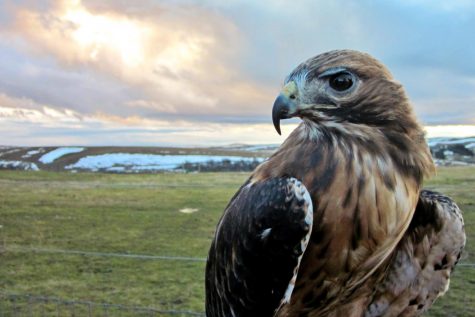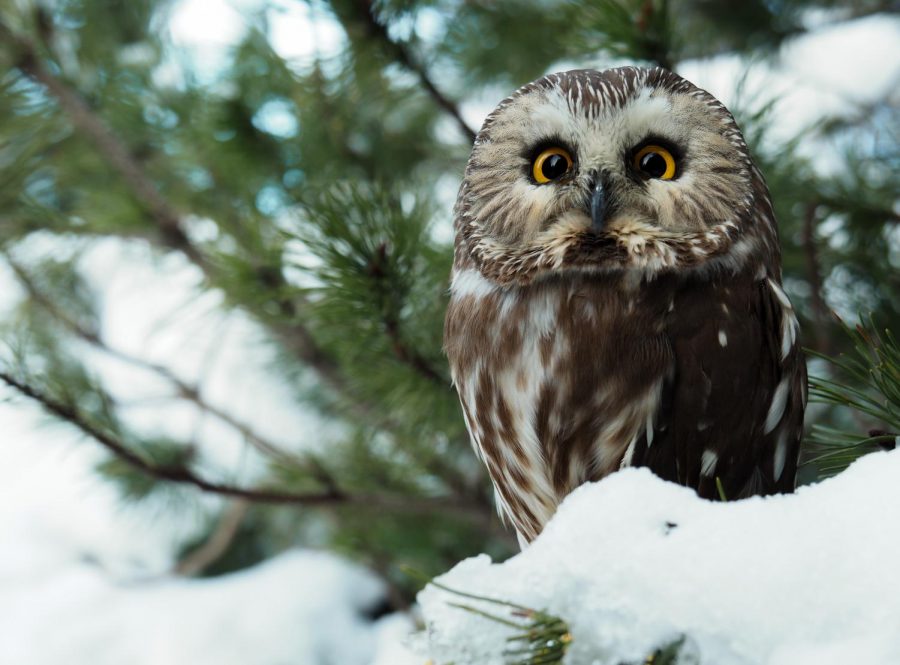Raptor club wants to protect birds of prey
Club gets to educate college, young elementary students on owls, eagles
Sawyer is the Raptor Club’s Norther Saw Whet Owl. The club houses 11 birds of prey, from tiny pygmy owls to large eagles.
April 8, 2018
The WSU Raptor Club is one of the only clubs on campus that allows students and community members to interact directly with wildlife without any prior experience.
Mia Patterson, social media specialist for the College of Veterinary Medicine, is the public relations officer for the Raptor Club. She joined in 2017 because of her interest in wildlife education.
“I was originally really nervous because I had no veterinary experience,” Patterson said. “The whole group was so warm and welcoming with teaching handling abilities. This kind of group really helps build confidence.”
Raptors are defined as birds of prey, such as owls, hawks and eagles, which hunt live animals for their own survival. While these birds are powerful predators in their own habitats, federal and state laws protect them from the risks of human interaction.
The WSU Raptor Club helps protect raptors unable to return to the wild due to injury or illness, and teaches members of the community about wildlife conservation while doing so.
“I get educated on a daily basis,” Patterson said. “I get to learn about reading bird signs and how to work with the birds. I also get to teach college students and kindergartners about these fascinating birds.”
The WSU Raptor Club was founded in 1981. According to the organization’s website, its founding bird, Charlie, was a red-tailed hawk brought to WSU after being hit by a car and suffering shoulder injuries that rendered him unable to fly.

He died in 2014 at the age of 33, making him the oldest-documented red-tailed hawk. According to the University of Michigan Museum of Zoology website, most red-tailed hawks die before the age of 2. The oldest wild red-tailed hawks have been documented to live to about 21 years.
The Raptor Club currently houses 11 resident raptors, seven of which are owls, two hawks, one falcon and one eagle.
Club members can work their way through handling the birds with different training. Many group members join after seeing one specific bird in a presentation, with the goal of working their way up until they themselves can hold that bird, Patterson said.
The WSU Raptor Club meets once a month in Bustad Hall. Meetings are open to anyone, both students and community members, over the age of 18. The Raptor Club is best reached through their email, [email protected].
“The Raptor Club gives college students a unique outlet and opportunity to work your way up through all the different birds,” Patterson said. “Getting to see the students’ faces light up when they first get to hold that one bird that inspired them to join is beautiful.”









